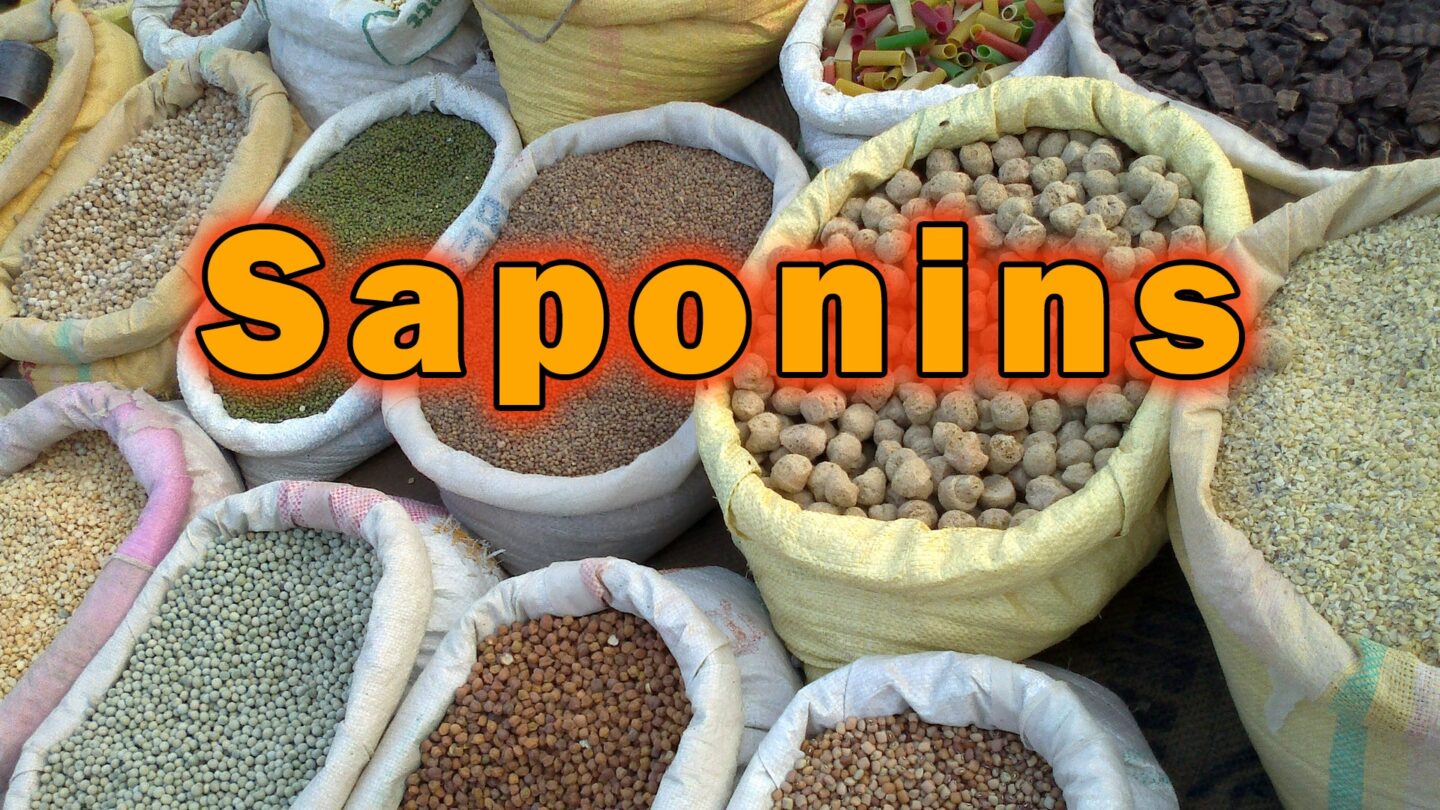Saponins are antinutrients that belong to a class of defense chemicals found in abundance in certain plants. They are also known as ‘amphipathic glycosides’ from the soap-like foam they produce when shaken in watery solutions – and the fact that they are used as a model for detergents. The latter is very disturbing, and we’ll get to it in a moment.
Saponins have a water-soluble carbohydrate bonded to a fat-soluble triterpene or steroid structure. The water-soluble and fat-soluble properties interact with the surface tension of water to create bubbles. Combined with their dissolving properties, saponins are modelled and manufactured as detergents.
Some researchers that have looked at plant-derived saponins classify them as ‘hormetic phytochemicals’, that is, they enforce a cellular stress response which in minimal doses results in a theoretical beneficial hormetic effect. In other words, by exposing your body with very low levels of toxic compounds, like saponins, you might make your cells stronger. Problem is, no one knows where the threshold is – and if you expose your body to other toxins, stresses or inflammation, that threshold might be pretty close to zero. In other words, you will do serious harm!
This is why fasting, cold exposure, exercise and such ‘stressors’ are much better ways to achieve hormesis, because you can control the dose and estimate the effects much more easily. Consuming toxic plant-foods for the ‘hormetic effect’ is simply stupid. Why would you consume saponins that dissolve your cell membranes and actually kill your cells – including red blood cells? And even worse, these plant ‘foods’ contain a lot of other defense chemicals and antinutrients that we cover in these series, making them even more dangerous than the threat from saponins alone.
Unfortunately, the bad news for saponins does not stop there. Similar to oxalates, phytins, lectins, and tannins; saponins are antinutrients and they bind to glucose, protein, and vitamins A, B12, D, and E, thereby interfering with digestion and absorption of these nutrients. They can also interfere with the digestion of cholesterol (up to 44%) and saturated fats (up to 87%), forcing them to be excreted rather than absorbed, and thus negatively affect our hormone production and brain function. And to add insult to injury, many saponins have a phytoestrogenic effect and may act as an endocrine disruptor – reducing testosterone levels and causing thyroid problems.
In women, endocrine disruptors are linked to higher rates of breast cancer, infertility, and children with birth defects. And children may be more susceptible to endocrine disruption because their brains and organs are still in development.
Saponins also inhibit pancreatic lipase and our ability to digest fats, which can cause oily diarrhea and liver failure. Other studies have shown that they can form protein complexes that have unknown effects, when combined with proteins like casein from milk.
Similar to lectins, saponins can break down the wall of your intestine, leading to leaky gut. And if your intestine wall is compromised, and saponins can enter the bloodstream, then they can attack cells all over your body (including your red blood cells), causing serious health issues and wide-spread chronic inflammation.
Saponins are also genotoxic, which means that they cause DNA damage and interfere with cell replication.
Saponins are found in large quantities in legumes (especially soybeans, chickpeas, kidney beans, navy beans, haricot beans), in licorice root, alfalfa sprouts, asparagus, peanuts, garlic, oats, quinoa, amaranth, spinach, and red wine.
And no, rinsing, soaking, processing and cooking does not lower saponins content by any significant amount.
